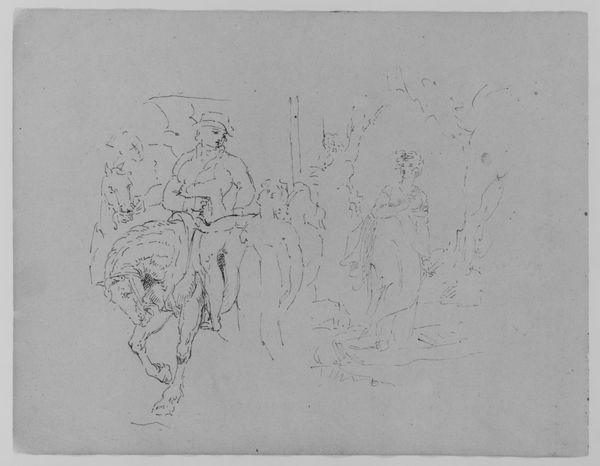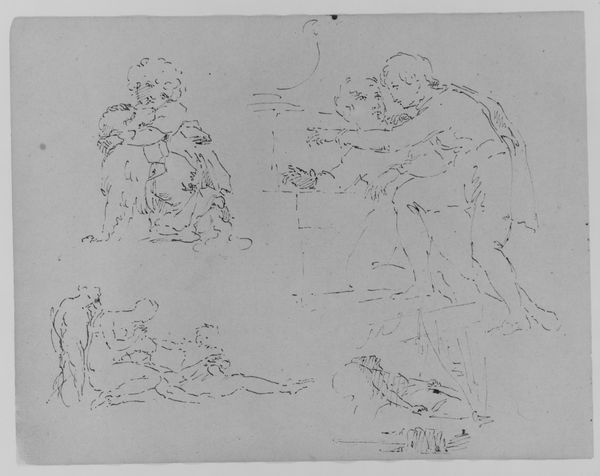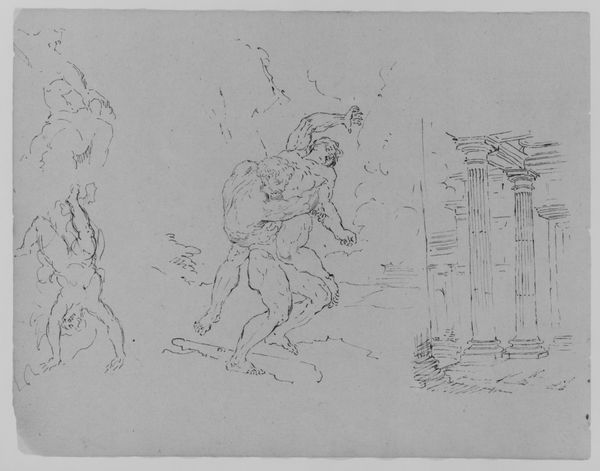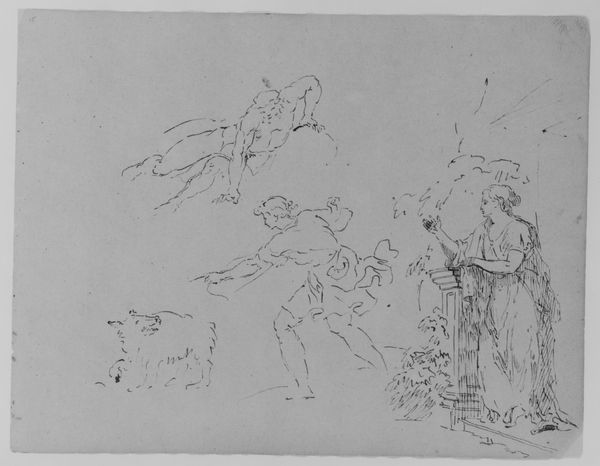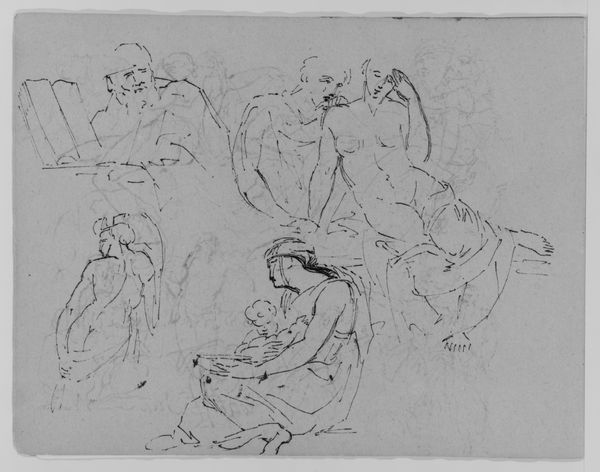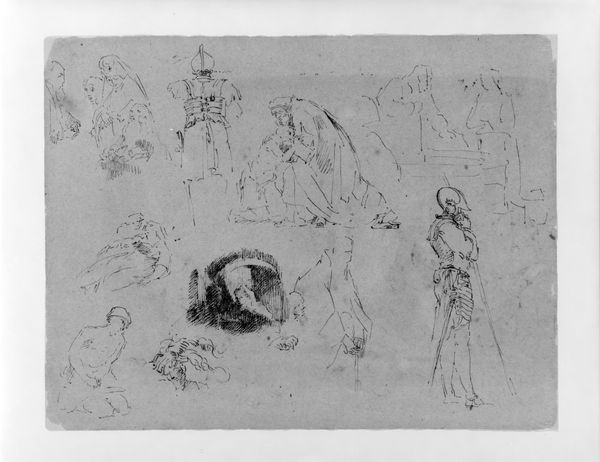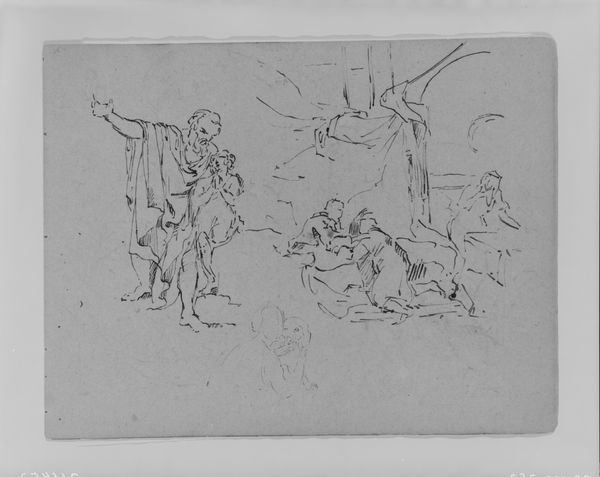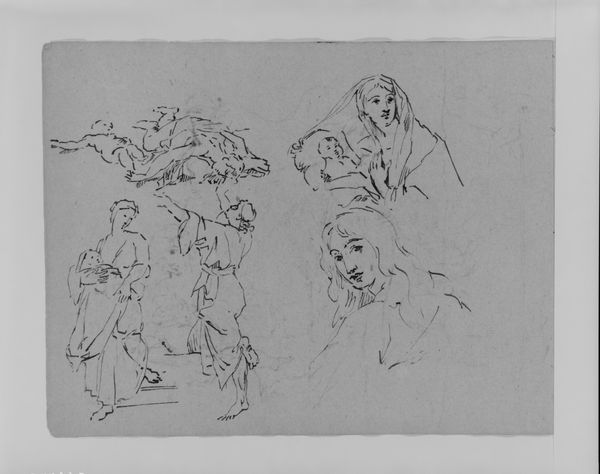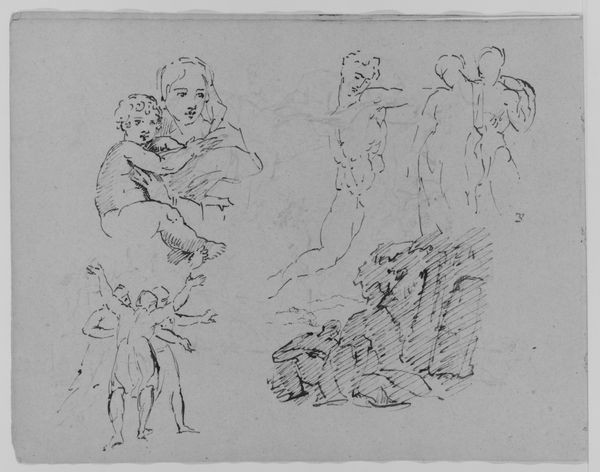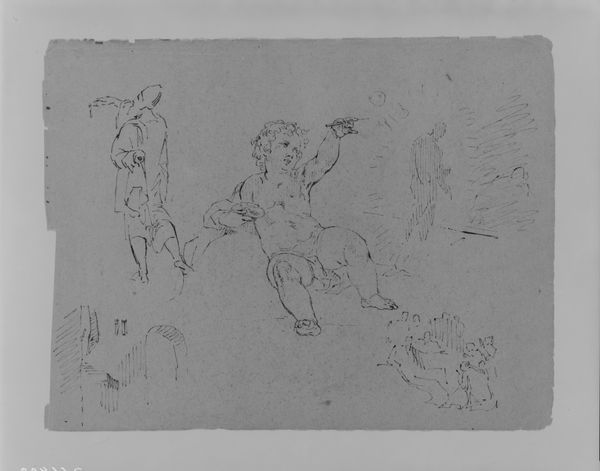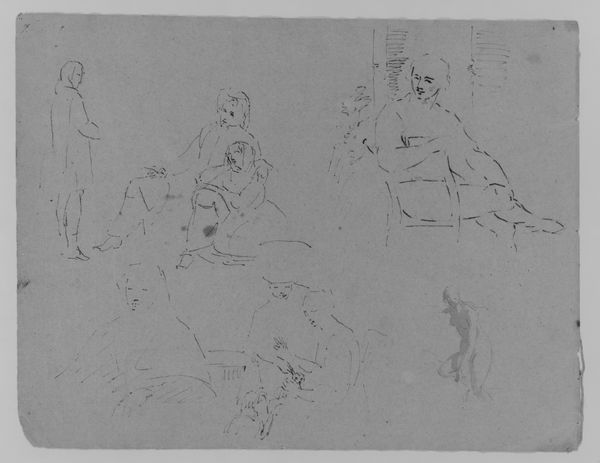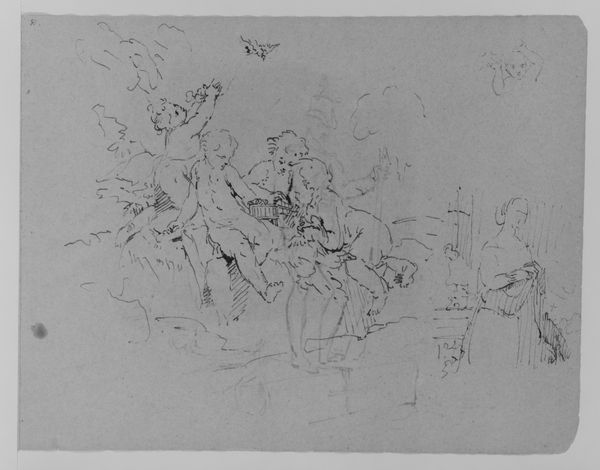![Doric Rotunda Interior with Curtains; Four Figure Studies, Including a Female Nude Bather with Putti, and a Martyrdom [of St. Bartholomew?] (from Sketchbook) by Thomas Sully](/_next/image?url=https%3A%2F%2Fd2w8kbdekdi1gv.cloudfront.net%2FeyJidWNrZXQiOiAiYXJ0ZXJhLWltYWdlcy1idWNrZXQiLCAia2V5IjogImFydHdvcmtzLzE4MDgwZDE2LTg4ZTQtNDUyMS05ZjMxLWU4NDNjZWYzODVjNy8xODA4MGQxNi04OGU0LTQ1MjEtOWYzMS1lODQzY2VmMzg1YzdfZnVsbC5qcGciLCAiZWRpdHMiOiB7InJlc2l6ZSI6IHsid2lkdGgiOiAxOTIwLCAiaGVpZ2h0IjogMTkyMCwgImZpdCI6ICJpbnNpZGUifX19&w=3840&q=75)
Doric Rotunda Interior with Curtains; Four Figure Studies, Including a Female Nude Bather with Putti, and a Martyrdom [of St. Bartholomew?] (from Sketchbook) 1810 - 1820
0:00
0:00
drawing, ink
#
portrait
#
drawing
#
neoclacissism
#
classical-realism
#
figuration
#
female-nude
#
ink
#
history-painting
#
academic-art
#
nude
#
male-nude
Dimensions: 9 x 11 1/2 in. (22.9 x 29.2 cm)
Copyright: Public Domain
Curator: Looking at this sketchbook page by Thomas Sully, created sometime between 1810 and 1820, one immediately senses the artist grappling with form and space. The drawing, done in ink, encompasses diverse subjects. Editor: My initial feeling is a bit chaotic, honestly. It's like fragments of different stories or architectural plans jumbled together. The weight of the ink strokes varies so drastically, as though different tools were employed for each individual drawing within. Curator: Indeed. This particular page features a Doric rotunda interior, alongside figure studies including a female nude, a bather, and what seems to be a martyrdom scene, perhaps of St. Bartholomew. The juxtaposition of these seemingly disparate elements offers a fascinating insight into the artist’s process. What’s immediately striking to me is the classical ideal of beauty exemplified in the nude figures and architecture, all rendered in very swift, decisive strokes. Editor: The architectural sketch is especially interesting when thinking about Sully’s working context, he was known mostly for painting portraits! It makes me consider who would commission such a design, what building materials they’d employ. Was Sully creating this with a particular patron, with specific economic resources in mind? These drawings offer such an incomplete view to an exterior commission – its potential consumption – which highlights their liminal state. Curator: You’re right, Sully's legacy firmly places him as a portraitist, a vocation driven by specific class dynamics. But consider how even portraiture serves ideological purposes, reinforcing social hierarchies through representation. In this context, these sketches present a window into the prevailing academic ideals of beauty, form and structure that underpin those representations, a type of standard even portraits adhere to. Notice how the body is represented here according to neoclassicism: a specific understanding of the body promoted during the time period Sully was most prolific. Editor: Yes! Looking closely, especially at the study of the bather surrounded by putti, I’m drawn to consider the type of paper Sully was sketching on, and if that made him adapt his craft. Was the ink a costly, rare commodity or commonplace, mass-produced for wider availability? Its materiality holds sway. It can determine the mark that's left. I agree though that we need to address the artistic lineage present within. Curator: Precisely. Sully, through these sketches, reveals the means, material and intellectual by which beauty is crafted, ideas passed on, but always subject to material conditions, to the page he sketched on, as you’ve noted. Editor: This ink drawing reminds me that everything we perceive—from architectural ideals to gendered forms– emerges from very real processes and materials! Curator: And these sketches are fascinating sites of negotiation. Thanks for helping me see new perspectives on the page!
Comments
No comments
Be the first to comment and join the conversation on the ultimate creative platform.
